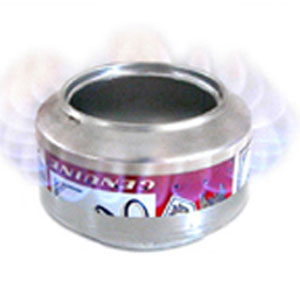Make a family emergency action plan. Don't just write it down, but use it. Practice your plan with your family members especially if you live in an area prone to natural disasters. I've included the plan I've made for my family, feel free to copy it or use it as a starting point for your own. It just makes good sense to be prepared.
FAMILY EMERGENCY ACTION PLAN
Evacuation
- Evacuate immediately if told to do so
- Listen to your radio/follow instructions
- Wear protective clothing/sturdy shoes
- Take your Bugout Bag
- Take the pets’ Bugout Bag
- Lock the house
- Use travel routes as directed—no shortcuts
If you’re sure you have time:
- Shut off water, gas, electricity if instructed
Contact Information
Important Telephone Numbers
- Home XXX-XXXX - Fulton Jr. High XXX-XXXX
- Family member Cell XXX-XXXX - Police Station XXX-XXXX
- Family member Cell XXX-XXXX - Fire Station 1 XXX-XXXX
- Family member Cell XXX-XXXX - Fire Station 2 XXX-XXXX
- Family member Cell XXX-XXXX - Family member Cell XXX-XXXX
- Work XXX-XXXX - Point of Contact XXX-XXX-XXXX
Important E-Mail Addresses
- If you are able to access e-mail contact Point of Contact (friend, family):
friend@gmail.com
family@gmail.com
Tell them where you are, your condition, and whether you’re in contact with other family members.
Remember…
Telephones (including cellular) may not work
Use your AM radio for incident updates
If telecommunications are down use the 2-way radio
2-Way (FRS) Radio Communications Plan
NOTE: Radios are preprogrammed to Channel XX, Privacy Code XX, simply turn it on.
Immediately following an incident relocate or remain at a safe location before doing anything else. Once you are physically safe:
1. Turn the radio on
2. Key the microphone and clearly say “Name Family (Your name) calling”
3. Unkey the microphone and listen for a reply
4. After a few seconds repeat your transmission
5. Continue the process as time permits until communications are established
6. If unable to establish communications, turn your radio off
* Repeat this process at the top of the hour and then every 15 minutes
* If no contact after 2 hours, repeat the process on the hour and at half past until contact is made. Keep trying and don’t get discouraged!
NOTE: Buildings, terrain, power lines, etc may degrade the radio. Try to transmit from open, flat ground.
Meeting Places
If we are unable to stay in our homes due to the emergency—and have not been directed to a specific location—go to the closest of the following:
High School, or
Junior High School, or
Fire Station
Choose several alternate locations. Check your local Chamber of Commerce for information about local emergency locations.
If you are unable to reach one of these locations, or they are unsafe, try to find a public building (City Hall, Library, Post Office, School, etc.) or other safe, physically sound building.
NOTE: Others may not be as well prepared as you are and may be desperate. Exercise caution, and avoid others if necessary.
Try to post easily read messages (cardboard signs, etc.) indicating where you are or where you’re going.
Bugout Bag
At a minimum your Bugout Bag should contain:
Family Emergency Action Cards Local map
FRS Radio with Instructions Knife
Clothes (underwear, pants, shirt, socks) Whistle
Lighter Ziploc bags
Emergency poncho Personal ID
Flashlight Personal papers (Thumb Drive)
Toothbrush with toothpaste Chemlights (5)
AM radio Can opener
First aid kit Notepad and pen
Emergency blanket Cash (notes and change)
Food Eating utensil(s)
Water Batteries
Firearm (depending on your location, and type of emergency)
NOTE: If you can confirm the safety of the source, refill your empty water bottle(s) as soon and as often as you can. Keep your bottles full. You MUST stay hydrated.
Remember…
Your Bugout Bag is ALL you have, is for YOUR USE ONLY, and is intended to last for the duration of the emergency. Use its contents sparingly and wisely. Do not expect to be resupplied!

